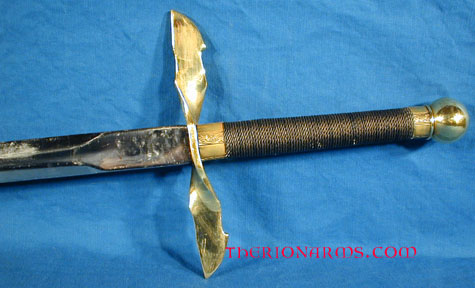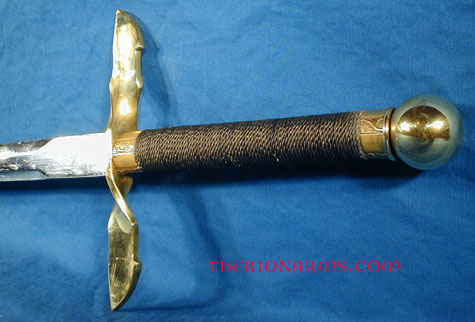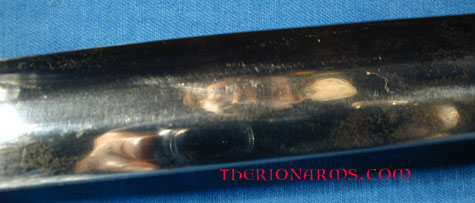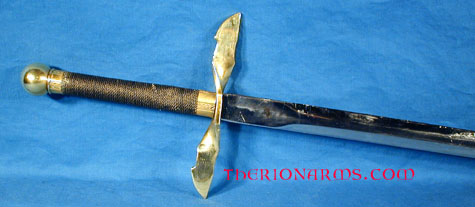Sky Castle arming sword dw14









Measurements
From the world's last collection of Sky Castle swords. The blade is 1075 high
carbon spring steel, austempered* for the ultimate in blade strength,
springiness, and uniformity of grain structure. Blade will flex to nearly 45%
and return to true! Wide tang, polished brass fittings, corded grip. High polish
blade shows a bit of shop/storage wear, but is otherwise pristine - no nicks,
never used. Folks may be surprised at these sword's inclusion at TherionArms
because the guards and pommels are not historically accurate, but the blade
temper is so magnificent that we couldn't pass up the opportunity to offer you
these sturdy and reliable work horses.
*"Austempering is an isothermal heat treatment that, when applied to ferrous
materials, produces a structure that is stronger and tougher than comparable
structures produced with conventional heat treatments. Conventional heat treaters
heat the parts to "red heat" in a controlled atmosphere and then quench them in a
bath of oil or water that is near room temperature. (Maybe even as high as a few
hundred degrees Fahrenheit). This produces a crystalline structure known as
martensite, a hard, brittle phase. The parts are then tempered in another furnace
at 350°F (177c) to 1100°F (593c) to decrease the "brittleness."
Austempering starts the same way. The parts are heated to red heat in a
controlled atmosphere (so they don't scale) but then are quenched in a bath of
molten salt at 450°F (232c) to 750°F (399c). The quench temperature is
above the martensite starting temperature. Therefore, a different structure
results - bainite.
During the process of quenching to martensite, the martensite reaction begins
immediately. The result is that the outside of the part may already be
transformed while the inside is still red hot. It is this non-uniform phase
transformation that results in distortion and tiny micro cracks that lower the
strength of the steel.
By contrast, the austempering reaction that produces bainite takes place over
many minutes or hours. This results in uniform growth and a stronger (less
disturbed) microstructure."
length: 37 5/8"
blade: 29"
blade width: 1 1/4"
grip and pommel: 8 1/2"
guard: 8 1/2"
balance point: 4" from guard
weight: 2 lbs 14.0 oz

